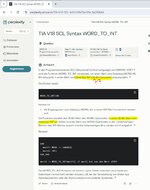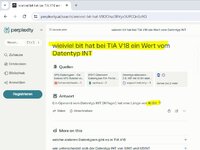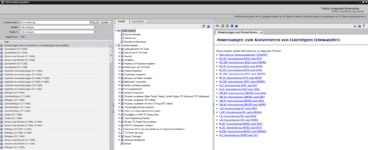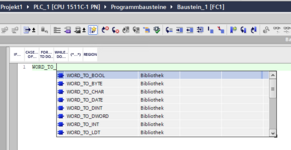In Siemens TIA Portal, the Structured Text (STL) language is often used for programming PLCs. Converting a WORD data type to an INT data type is a common requirement. The conversion can be done using the built-in functions provided by Siemens TIA Portal.
Here's how you can use the `WORD_TO_INT` function in STL:
```stl
// Declare the variables
VAR
inputWord: WORD;
outputInt: INT;
END_VAR
// Initialize the input word with a value (example: 16#1234)
inputWord := 16#1234;
// Perform the conversion from WORD to INT
outputInt := WORD_TO_INT(inputWord);
```
### Explanation:
1. **Variable Declaration:**
- `inputWord` is declared as a `WORD`.
- `outputInt` is declared as an `INT`.
2. **Initialization:**
- `inputWord` is assigned a hexadecimal value `16#1234` as an example.
3. **Conversion:**
- The `WORD_TO_INT` function converts the `inputWord` to an integer and stores the result in `outputInt`.
### Important Notes:
- The `WORD` data type is 16 bits wide and can hold values from `0` to `65535`.
- The `INT` data type in Siemens TIA Portal is also 16 bits wide but it is a signed integer, which means it can hold values from `-32768` to `32767`.
If the `WORD` value exceeds the positive range of `INT` (i.e., is greater than `32767`), the conversion might result in a negative value due to the signed nature of the `INT` type.
### Example with Boundary Check:
If you want to ensure the conversion is within the range of `INT`, you can add a boundary check:
```stl
// Declare the variables
VAR
inputWord: WORD;
outputInt: INT;
END_VAR
// Initialize the input word with a value
inputWord := 16#1234;
// Perform the conversion from WORD to INT with boundary check
IF inputWord <= 16#7FFF THEN
outputInt := WORD_TO_INT(inputWord);
ELSE
// Handle out-of-range value, for example, set to max INT value
outputInt := 32767;
END_IF;
```
In this example, if `inputWord` is within the range of `0` to `32767` (hexadecimal `16#7FFF`), the conversion proceeds normally. If the value exceeds this range, a predefined action is taken (in this case, setting `outputInt` to the maximum positive value `32767`).
### Practical Usage:
This type of conversion is useful in scenarios where you need to process 16-bit binary data and perform arithmetic or logical operations on the converted integer values in your PLC program.
By understanding and using the `WORD_TO_INT` function appropriately, you can effectively handle various data types and ensure correct data manipulation in your automation projects.











